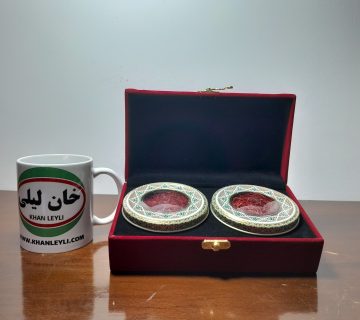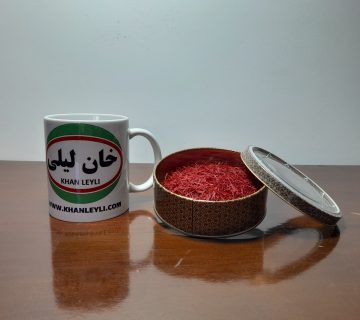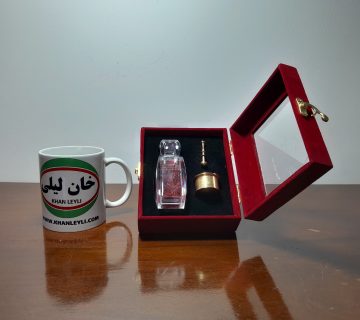Iran, particularly the province of Khorasan Razavi, is renowned for its saffron cultivation. Within this province, several cities stand out as prime locations for planting saffron due to their favorable climatic conditions and soil characteristics. Here are some of the best cities in Iran for planting saffron:
- Mashhad:
– Location: Mashhad is the capital city of Khorasan Razavi province and is one of the largest cities in Iran.
– Significance: Mashhad is a major hub for saffron cultivation, with many saffron farms located in the surrounding areas. The city’s climate and soil conditions are conducive to high-quality saffron production.
- Torbat-e Heydarieh:
– Location: This city is situated in the northeastern part of Iran, within Khorasan Razavi province.
– Significance: Torbat-e Heydarieh is recognized for its saffron farms, benefiting from the region’s climate and soil characteristics. It has become a key center for saffron production and trade
- Gonabad:
– Location: Gonabad is located in the southern part of Khorasan Razavi province.
– Significance: Gonabad has a long history of saffron cultivation and is known for producing high-quality saffron. The city’s geographical features contribute to the success of saffron farming in the region.
- Qa’en (Ghaen):
– Location: Qa’en is located in the southwest of Khorasan Razavi province.
– Significance: Qa’en is celebrated for its saffron farms, and the saffron produced in this region is highly regarded for its color, aroma, and flavor. The city’s climate and altitude contribute to the excellent quality of saffron.
- Ferdows:
– Location: Ferdows is situated in the southern part of Khorasan Razavi province.
– Significance: Ferdows has gained prominence as a saffron-producing region, and saffron cultivation plays a significant role in the local economy. The city benefits from the suitable climate and soil conditions for saffron farming.
- Taybad:
– Location: Taybad is located in the northeastern part of Khorasan Razavi province, near the border with Afghanistan.
– Significance: Taybad has become a notable center for saffron cultivation, and its saffron farms contribute to the overall production of high-quality saffron in the region.
These cities, situated within the province of Khorasan Razavi, collectively form the epicenter of saffron cultivation in Iran. The combination of specific climatic conditions, soil characteristics, and a longstanding tradition of saffron farming has established these cities as key players in the global saffron market.
Saffron Havens: Exploring the Top Cities for Cultivating Gold in Iran
In the expansive tapestry of Iran’s agricultural landscape, certain cities emerge as veritable havens for the cultivation of the golden spice – saffron. This essay delves into the rich terrain of saffron cultivation in Iran, specifically exploring the top cities that serve as the nurturing grounds for this precious crop. From the sun-kissed fields of Khorasan Razavi to the thriving saffron farms, these cities stand as beacons in the global saffron market, epitomizing the art and science of cultivating gold.
Situated in the heart of Khorasan Razavi, Mashhad stands as a flourishing saffron oasis. Its sprawling fields, kissed by the Iranian sun, provide an ideal canvas for the cultivation of the delicate Crocus sativus flowers. As pilgrims visit the holy city, the saffron farms surrounding Mashhad silently contribute to the creation of a different kind of pilgrimage – a journey into the world of saffron excellence.
Nestled in the northeastern reaches of Iran, Torbat-e Heydarieh emerges as a city where saffron elegance is meticulously crafted. The city’s saffron farms benefit from the region’s unique climate and soil characteristics, giving rise to saffron strands that embody the essence of color, aroma, and flavor. Torbat-e Heydarieh is a testament to the marriage of tradition and innovation in saffron cultivation.
In the southern part of Khorasan Razavi, Gonabad conducts a saffron symphony that resonates with excellence. With a history steeped in saffron cultivation, Gonabad’s saffron farms have become synonymous with quality. The city’s commitment to preserving the traditions of saffron harvesting, coupled with advancements in cultivation practices, positions it as a key player in the realm of saffron production.
Qa’en, situated in the southwest of Khorasan Razavi, emerges as a city dedicated to crafting the crown jewel of saffron. The saffron produced in Qa’en is celebrated for its deep red hue and potent aroma. The city’s geographical features, including altitude and soil quality, contribute to the distinctiveness of Qa’en’s saffron, making it a sought-after variety in the global market.
Ferdows, gracing the southern part of Khorasan Razavi, weaves its saffron fields into the vibrant tapestry of the region. Saffron has become an integral part of the city’s agricultural landscape, shaping the local economy and fostering a cultural connection to this precious spice. Ferdows stands as a testament to the resilience and dedication of saffron farmers in the southern saffron belt.
Taybad, situated in the northeastern expanse of Khorasan Razavi, is a saffron sanctuary where the red gold flourishes. The city’s commitment to sustainable saffron farming practices and its strategic location near the Afghan border contribute to its prominence in saffron cultivation. Taybad’s saffron farms serve as guardians of a delicate spice that holds immense cultural and economic significance.
In conclusion, these cities within Khorasan Razavi collectively stand as guardians of Iran’s golden legacy – the cultivation of saffron. From the spiritual allure of Mashhad to the crafting of saffron elegance in Torbat-e Heydarieh, the symphony in Gonabad, the crown jewel of Qa’en, the saffron fields of Ferdows, to the sanctuary in Taybad, each city contributes to the cultivation of saffron, preserving traditions, and shaping the narrative of Iran’s role as a global leader in saffron production. These saffron havens not only cultivate a spice but also nurture a cultural heritage and economic prosperity that transcends borders.
Blooms of Gold: Iran’s Premier Saffron Cities Revealed
In the heartland of Iran, where the sun paints the landscape with its golden brush, lies a treasure trove of saffron cultivation. These cities, adorned with fields of delicate Crocus sativus flowers, stand as the premier hubs for producing the world’s most sought-after spice – saffron. This essay embarks on a journey to unravel the enchanting tale of saffron cultivation in Iran, revealing the blooms of gold in the nation’s premier saffron cities.
Mashhad, the jewel of Khorasan Razavi, stands as the radiant saffron capital of Iran. In the shadow of its holy shrines, the city’s saffron fields stretch to embrace the sunlight, nurturing the vibrant blossoms that give birth to the red gold. Mashhad’s saffron farms, kissed by a climate blessed with warm days and cool nights, yield strands renowned for their vivid color, enchanting aroma, and exquisite flavor.
In the northeastern reaches of Iran, Torbat-e Heydarieh emerges as a city dedicated to crafting saffron elegance. Its saffron farms, scattered across the undulating landscapes, benefit from a unique marriage of soil, altitude, and climate. Here, saffron is not merely cultivated; it is sculpted, resulting in strands that embody the pinnacle of sophistication in both appearance and taste.
Gonabad, with its roots deeply embedded in the saffron symphony, graces the southern landscape of Khorasan Razavi. The city’s saffron farms contribute to a harmonious melody of spice production, producing saffron strands that resonate with authenticity and richness. Gonabad’s commitment to preserving saffron traditions echoes in every crimson thread harvested from its fertile fields.
Qa’en, nestled in the southwest of Khorasan Razavi, takes pride in crafting the crown jewel of saffron. Here, saffron cultivation is an art form, meticulously tended to ensure each stigma reflects the intensity and purity that defines Qa’en’s saffron. The city’s saffron farms paint a tapestry of deep red hues, earning it a distinguished place in the hierarchy of premium saffron varieties.
Ferdows, woven into the southern tapestry of Khorasan Razavi, is a city where saffron fields bloom with golden promise. The saffron farms here are not only a source of economic prosperity but also a testament to the resilience of farmers who have mastered the art of cultivating saffron in challenging conditions. In Ferdows, every bloom is a testament to a centuries-old tradition.
Taybad, a saffron sanctuary in the northeastern expanse of Khorasan Razavi, stands as a guardian of the delicate spice. Its saffron fields, carefully cultivated against the backdrop of rolling hills, contribute to the city’s emergence as a key player in the global saffron market. Taybad’s commitment to sustainable farming practices ensures the preservation of a cultural and economic legacy.
In conclusion, these premier saffron cities in Iran, from the radiant Mashhad to the sophisticated Torbat-e Heydarieh, the symphonic Gonabad, the crown jewel of Qa’en, the golden tapestry of Ferdows, to the sanctuary in Taybad, collectively stand as guardians of Iran’s saffron legacy. Each city, with its unique blend of climate, soil, and agricultural practices, contributes to the cultivation of saffron that transcends borders, captivating the world with its blooms of gold. Iran’s saffron cities are not merely cultivators; they are stewards of a cultural heritage and purveyors of a spice that holds within it the essence of the nation’s golden traditions.
Saffron Sanctuaries: Unveiling Iran’s Optimal Cities for Cultivating the Red Gold
In the heartlands of Iran, where the sun-drenched soils and ancient traditions converge, lie sanctuaries dedicated to the cultivation of a spice that transcends its culinary use – saffron. These sanctuaries, nestled in cities blessed with ideal climatic conditions and a rich agricultural legacy, unveil the meticulous artistry behind cultivating the red gold. This essay embarks on a journey to explore Iran’s optimal cities for saffron cultivation, revealing the sanctuaries that nurture the delicate Crocus sativus flowers.
Mashhad, the jewel of Khorasan Razavi, emerges as a radiant oasis for saffron cultivation. The city’s saffron fields, bathed in the warmth of the Iranian sun, create an optimal environment for the delicate saffron flowers to flourish. As a spiritual and agricultural hub, Mashhad stands as a sanctuary where the red gold is cultivated with reverence, yielding strands that embody the essence of authenticity and purity.
Torbat-e Heydarieh, nestled in the northeastern expanse of Khorasan Razavi, unveils itself as a sanctuary dedicated to crafting saffron elegance. The city’s saffron farms benefit from the unique interplay of altitude and climate, resulting in strands that bear the mark of sophistication. Here, saffron cultivation is an art form, and each stigma harvested is a brushstroke in a masterpiece of color and flavor.
Gonabad, gracing the southern landscape of Khorasan Razavi, is a symphony of saffron where each note is meticulously crafted. The city’s saffron farms contribute to a harmonious melody of cultivation, producing strands that resonate with the authentic essence of the spice. Gonabad’s agricultural sanctuaries stand as guardians of tradition, where saffron is cultivated not just as a crop but as a cultural heritage.
Qa’en, nestled in the southwest of Khorasan Razavi, unveils itself as a city crafting the crown jewel of saffron. Its saffron fields, surrounded by a landscape that complements ideal soil conditions, yield strands of exceptional quality. Here, saffron cultivation is an act of creating a precious gem, each stigma representing the culmination of meticulous care and a commitment to perfection.
Ferdows, woven into the southern tapestry of Khorasan Razavi, stands as a city where saffron fields bloom in hues of gold. The city’s saffron farms not only contribute to economic prosperity but also serve as a testament to the resilience of farmers who have mastered the art of cultivating saffron in challenging terrains. In Ferdows, every saffron bloom is a brushstroke in a painting of perseverance and tradition.
Taybad, situated in the northeastern expanses of Khorasan Razavi, reveals itself as a sanctuary dedicated to the delicate spice of saffron. Its saffron fields, carefully tended against a backdrop of rolling hills, embody a commitment to sustainable farming practices. In Taybad, the red gold is not just a crop but a legacy carefully guarded by the sanctuaries of the land.
In conclusion, these optimal saffron cities in Iran, from the radiant Mashhad to the elegant Torbat-e Heydarieh, the symphonic Gonabad, the crown jewel of Qa’en, the golden tapestry of Ferdows, to the sanctuary in Taybad, collectively stand as guardians of Iran’s saffron heritage. These sanctuaries, rooted in ancient traditions and nurtured by optimal climatic conditions, not only cultivate saffron but also preserve a cultural legacy that has transcended generations. Each saffron bloom is a testament to the meticulous care and reverence with which the red gold is cultivated in these sanctuaries, ensuring that Iran’s saffron legacy continues to shine bright on the global stage.








No comment